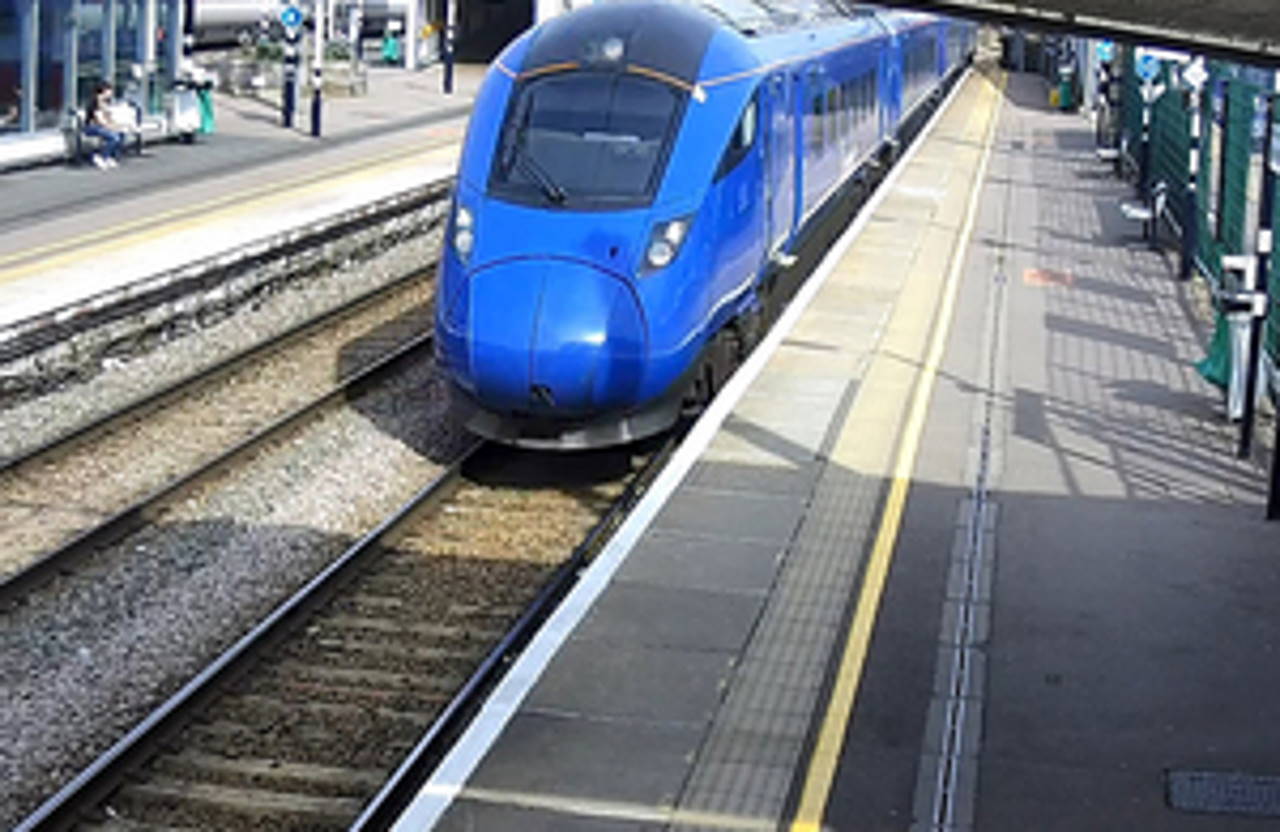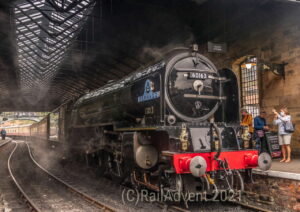The Rail Accident Investigation Branch (RAIB) has released its report about a train overspeeding at Spital Junction in Peterborough in April last year.
At about 10:20 on 17 April 2022, the 08:20 Lumo service from Newcastle to London King’s Cross travelled at excessive speed over three sets of points at Spital Junction in Peterborough.
The maximum permitted speed over the junction is initially 30 mph which reduces to 25 mph, but the train’s data recorder showed that the points were traversed at 76 mph.
The excess speed caused sudden sideways movements of the coaches, leading to some passengers being thrown from their seats and luggage falling from the overhead storage, with some passengers suffering minor injuries.
Although the train did not derail, and there was no damage, subsequent analysis of the incident showed that the train was near the speed where it would have overturned, and it was probable that some carriage wheels had lifted off the rails.
RAIB’s investigation found that the overspeeding was caused by the train’s driver not reacting appropriately to the signal they had received when approaching the junction. The signal was an indication to the driver that a diverging route had been set for the train with a lower speed limit than the straight-ahead route that the driver was expecting to take. The driver’s awareness of the possible signal conditions when approaching this junction and their training were insufficient to overcome this expectation.
The investigation found that Lumo had not assessed and controlled the risk associated with trains being unexpectedly routed on a different route at this location, nor had the company adequately trained the driver to prepare for this eventuality. Network Rail had also not assessed or effectively controlled the risk where overspeeding may occur at locations where the protecting signal is a long distance from the junction it controls.
It was also found that luggage falling from overhead luggage racks caused half of the passenger injuries.
Four recommendations were made as a result of the investigation:
- Lumo must review its processes to ensure that it effectively controls the risk of overspeeding at diverging junctions.
- Network Rail must identify those junctions where there is a greater potential for overspeeding, and share information about the associated risks with operators.
- Network Rail and train operators should consider and implement risk control measures for those junctions identified in the second recommendation.
- Lumo should take measures to minimise the risks from falling luggage.
The investigation also identified two learning points.
- Drivers should maintain alertness when approaching junction signals.
- Train operator emergency plans should specifically include processes for dealing with the aftermath of overspeeding incidents.
Andrew Hall, Chief Inspector of Rail Accidents said: The overspeeding incident at Spital junction in April 2022, led to a number of minor injuries. Some passengers were thrown from their seats and some hit by luggage falling from overhead racks. However, the outcome could have been much worse, as analysis showed the train was close to overturning. A similar event occurred at the same junction in May 2023, albeit a little slower and involving a train operated by a different train operating company.
“As designed, the signal protecting the junction cleared from red to green and displayed an indicator showing which way the junction was set as the train approached. The risk associated with a train then accelerating to an excessive speed over the associated diverging junction, when the driver has an expectation of taking a through route with a much higher permissible speed, had previously been illustrated when a light locomotive derailed in similar circumstances at Bletchley in February 2012. The risk associated with particular junctions and drivers varies with infrastructure configuration and driver expectation.
“It is therefore absolutely necessary that Network Rail and train operating companies work together to mutually understand and sufficiently mitigate risks of this type at specific locations, accounting for the rolling stock and operations involved.”
A Lumo spokesperson said “We would like to thank the Rail Accident Investigation Branch for its report and have taken this matter extremely seriously. We have already implemented all the recommended actions that have arisen since the incident in April 2022. These include how we train our drivers and how we control and manage luggage on board our trains.
The report also highlights that there were a number of factors that caused the incident, and there are a now a number of important lessons for all rail operators to learn, which we fully support. A separate train operator experienced a similar incident at the same location this year, so its important that the industry heeds the advice in this report and ensures drivers are fully aware of the particular characteristics of this junction at Peterborough, and others like it. We are working closely with industry partners, including other operators and Network Rail, to play our part in this.
We would like to apologise again to the passengers who were travelling with us on 17 April 2022. It was a distressing experience for all involved. We have cooperated fully with the RAIB and have learned the lessons to come from this. The learnings from this incident will contribute to the continued improvement of safety standards across the UK rail network.
Passenger safety is our number one priority, and we are proud to carry over a million passengers a year between London and Edinburgh.”





Responses
To me, what I think should happen is ALL Lumo drivers be taken off roster and trained properly.
Lumo and Hull Trains are owned by the same person a Dutchman. Could it be that Hull train drivers are asked to fill in for Lumo drivers.
It will be a long time before the new signal system is in operation on the ECML. When it is, every train including Tornado and Flying Scotsman will have the equipment installed.
Well most trains including Class 800, Class 801, Class 802 and Class 803 do have maximum speed of 125mph and the ECML is a railway line that has 125mph on it. Except for slow lines that have a maximum speed of 70mph.
Fly by Night companies.
Remember when Grand Central were running short HST’s at 125mph and claimed they didn’t know that short trains were restricted?
Grand Central HST’s were never restricted. A 2+5 HST is perfectly safe and licensed for operation at 125mph, even with the brakes isolated on one coach. A 2+4 is licensed for 125mph too, but must reduce to 100mph if the brakes are isolated on any vehicle in the formation. 2+3 or less and a HST is restricted to 100mph, apart from back to back and solo power cars which are treated as light locomotives. I.e. 60 under 90, and 75 over 90.
Not good you would think there would be some other warning in the cab on approach especally if it could cause derailment
That’s what ETCS will be…
That is why ERTMS signalling is being installed across the UK starting with the ECML including through Spittal Junction. It will give the driver live information on the track ahead directly to a high definition screen in the trains cab, and will also be able to take control from the driver and perform an emergency brake application if the driver still makes a mistake, and the computer thinks an overspeed of more than 3mph is about to occur. After the Southall and Ladbroke Grove crashes, the government were going to install Automatic Train Protection right across the country which would have prevented these types of incidents. Unfortunately, the public didn’t support the massive expenditure necessary to achieve it, and ATP was only installed on the Great Western Main Line, and the Chiltern Main Line. Sometimes the public is its own worst enemy. The public demanded that ECML electrification done on the cheap too, then moans whenever the wires come down. The cheaper but less effective Train Protection and Warning System was adopted as the nationwide supplement to the standard Aitomatic Warning System instead. TPWS can prevent most crashes and overspeed, but not those of this type. Train Protection is still very much an advisory, rather than a supervisory business.